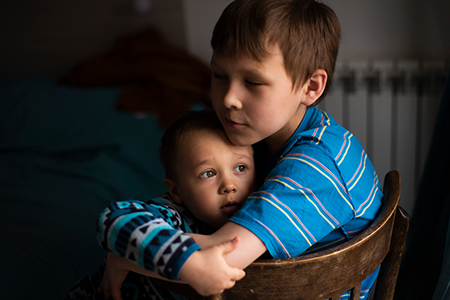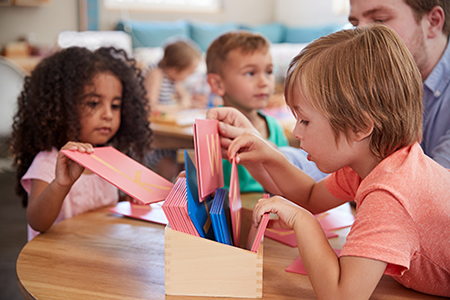The EU-LFS indicator measures the share of the population aged 18–24 with at most lower secondary education who were not involved in any education or training during the four weeks preceding the survey. The indicator considers gender and educational attainment of the parents.
In 2022, 9.6% of young adults aged 18–24 in the EU27 were early school leavers (11.1% of males and 8.0% of females).
Analysis over time of the share of early school leavers, by sex and parental educational attainment, 2015–2022
For the period 2015–2022 covered by this indicator, the EU average decreased by 1.4 percentage points for young males and females. The share of early school leavers was especially large for the population with parents with low educational attainment. During the same period, a decrease of disparities can be seen between Member States for all disciplines, which is reflected in the decrease over time in the standard deviation. Therefore, upward convergence is recorded, as reflected in an improvement of the situation in the EU27 over time (that is, fewer school leavers) together with a decrease in disparities between countries.
Although the EU average shows gender balance in the level of improvement for males and females, the dynamics between the Member States are slightly different. For instance, Portugal notably improved its performance during the period by 7.7 percentage points, falling below the EU average of early school leavers. Malta and Spain also showed a significant reduction, both moving closer to the EU average. Portugal’s improvement was, however, more balanced between males (-8.5 percentage points) and females (-7.1 points). In the case of Malta and Spain, the improvement rate for males was significantly higher than for females. Cyprus and Germany showed a deterioration in performance by more than two percentage points. In Cyprus, the female share increased more than that for males, whereas Germany witnessed the opposite.
Data for early leavers and parental educational attainment are only available for 2021, hence no time series analysis was possible. Notwithstanding, the average EU results show that early leavers are more common among those whose parents have a low educational attainment (26.2%), and much less for medium (6.9%) or high (2.9%) levels of education. The percentage is slightly higher among male respondents compared to female respondents, but gender differences become smaller as the educational attainment of parents increases. Despite the missing values for some countries, something can be said about them. In Slovakia, Romania, Bulgaria and Hungary, early school leavers whose parents have a low level of education account for more than 50% (69.7%, 57.5%, 55.5% and 51.1% respectively).
Explore the data
 The European Child Guarantee outlines recommendations for Member States to support equal opportunities in access to education and school-based activities for children in need to combat social exclusion and child poverty. The analysis presented here covers: the rate of low achievers in three core school subjects; households facing difficulties to pay for formal education; government spending on education for students in primary and secondary education; access to school trips and school events that cost money; access to regular leisure activities; the rate of early school leavers; and the number of 15-year-old students per teacher in schools, by schools’ socioeconomic profile.
The European Child Guarantee outlines recommendations for Member States to support equal opportunities in access to education and school-based activities for children in need to combat social exclusion and child poverty. The analysis presented here covers: the rate of low achievers in three core school subjects; households facing difficulties to pay for formal education; government spending on education for students in primary and secondary education; access to school trips and school events that cost money; access to regular leisure activities; the rate of early school leavers; and the number of 15-year-old students per teacher in schools, by schools’ socioeconomic profile. 




